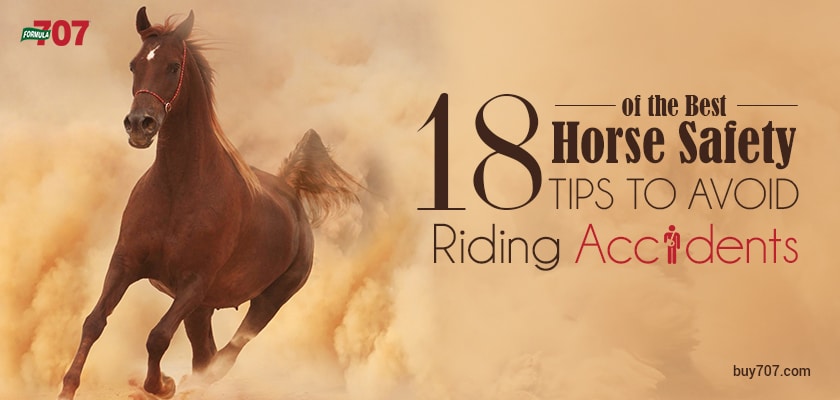 Image Source: Maxpixel
#4. Safety in the saddle is a vital part of horse riding. You can maintain horse safety while riding by making sure the saddle blanket and other equipment are free of foreign objects that could prevent riding comfort. And don’t forget to ensure that the back, cinch, and girth areas of your horse are clean.
#5. Fasten the accessory straps such as breast collars, martingales, tie-downs, etc. only after you’ve cinched on the saddle. Similarly, you’ll need to unfasten these straps first before you loosen the cinch.
#6. Make sure the back cinch isn’t too loose because the horse could accidentally get their hind leg caught between their belly and the cinch. Tighten the cinch by pulling up slowly. And be sure to check it three times – after you’ve saddled up after the horse has walked a few steps, and after you’ve mounted and ridden the horse for a short distance.
#7. Avoid mounting or dismounting in a barn or near fences, trees, etc. Riders have experienced injuries as a result of rearing mounts and side-stepping mounts. In addition to this, use the reins to take light control of your horse so that it stands quietly as you mount or dismount.
#8. If you’re using Western equipment, bring the closed reins or romal forward and over the horse’s head after you dismount. If you’re using English equipment, you should run up the stirrups immediately after dismounting. That’s because your horse could get startled or annoyed by the dangling stirrups. You can then bring the reins forward and over the horse’s head, and this position makes it easier to lead a horse.
#9. Since horses scare easily when encountering unusual noises and objects as well as sudden movement, it’s up to the rider to maintain a secure seat and keep the horse under control at all times. If your horse is getting agitated, you need to remain calm and speak to it gently with a steady voice.
Give it time to calm down before you lead it away from the obstacle. If you’re dealing with an extra anxious horse, it might be a good idea to use supplements such as calming pellets that are designed to relax them and improve their concentration.
#10. When you’re going over bridges or through underpasses, make sure you walk your horse. And always use a bridle when you’re riding on roads, so you have better control of the horse.
#11. Paved or hard-surfaced roads are best to avoid but when you do have to cross such roads, it’s best to walk your horse. The same goes for when you have to pass through areas of heavy traffic.
Image Source: Maxpixel
#4. Safety in the saddle is a vital part of horse riding. You can maintain horse safety while riding by making sure the saddle blanket and other equipment are free of foreign objects that could prevent riding comfort. And don’t forget to ensure that the back, cinch, and girth areas of your horse are clean.
#5. Fasten the accessory straps such as breast collars, martingales, tie-downs, etc. only after you’ve cinched on the saddle. Similarly, you’ll need to unfasten these straps first before you loosen the cinch.
#6. Make sure the back cinch isn’t too loose because the horse could accidentally get their hind leg caught between their belly and the cinch. Tighten the cinch by pulling up slowly. And be sure to check it three times – after you’ve saddled up after the horse has walked a few steps, and after you’ve mounted and ridden the horse for a short distance.
#7. Avoid mounting or dismounting in a barn or near fences, trees, etc. Riders have experienced injuries as a result of rearing mounts and side-stepping mounts. In addition to this, use the reins to take light control of your horse so that it stands quietly as you mount or dismount.
#8. If you’re using Western equipment, bring the closed reins or romal forward and over the horse’s head after you dismount. If you’re using English equipment, you should run up the stirrups immediately after dismounting. That’s because your horse could get startled or annoyed by the dangling stirrups. You can then bring the reins forward and over the horse’s head, and this position makes it easier to lead a horse.
#9. Since horses scare easily when encountering unusual noises and objects as well as sudden movement, it’s up to the rider to maintain a secure seat and keep the horse under control at all times. If your horse is getting agitated, you need to remain calm and speak to it gently with a steady voice.
Give it time to calm down before you lead it away from the obstacle. If you’re dealing with an extra anxious horse, it might be a good idea to use supplements such as calming pellets that are designed to relax them and improve their concentration.
#10. When you’re going over bridges or through underpasses, make sure you walk your horse. And always use a bridle when you’re riding on roads, so you have better control of the horse.
#11. Paved or hard-surfaced roads are best to avoid but when you do have to cross such roads, it’s best to walk your horse. The same goes for when you have to pass through areas of heavy traffic.
 Image Source: Pxhere
#12. Depending on what activity you’re engaging in, make sure you wear the right kind of protective headgear that fits you. This is especially important when you’re going to participate in jumping activities.
#13. And of course, it goes without saying that riders should wear proper footwear such as boots or shoes that have hard toes and heels no matter the activity.
Image Source: Pxhere
#12. Depending on what activity you’re engaging in, make sure you wear the right kind of protective headgear that fits you. This is especially important when you’re going to participate in jumping activities.
#13. And of course, it goes without saying that riders should wear proper footwear such as boots or shoes that have hard toes and heels no matter the activity.
 Image Source: Maxpixel
#14. Before you carry a rope while riding a horse, learn how to handle it properly. And be extra cautious when working with a rope in case a horse isn’t rope-broke.
#15. Your clothes should be well-fitted so that they don’t snag on equipment. Remember that your jackets, front chap straps, and belts can get hooked on the saddle horn.
#16. When you’re working on the ground, don’t forget to remove your spurs because they can trip you.
#17. When you’re tending to the lower leg or hoof of a horse, do not kneel or sit because you might be unprepared to move away if the horse suddenly startles. It’s best if you remain in a squatting position.
Image Source: Maxpixel
#14. Before you carry a rope while riding a horse, learn how to handle it properly. And be extra cautious when working with a rope in case a horse isn’t rope-broke.
#15. Your clothes should be well-fitted so that they don’t snag on equipment. Remember that your jackets, front chap straps, and belts can get hooked on the saddle horn.
#16. When you’re working on the ground, don’t forget to remove your spurs because they can trip you.
#17. When you’re tending to the lower leg or hoof of a horse, do not kneel or sit because you might be unprepared to move away if the horse suddenly startles. It’s best if you remain in a squatting position.

